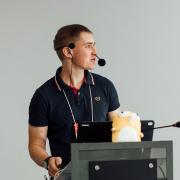
The Catcher of WAL-G
What do we expect from a backup system? What makes a good backup system stand out? And, most importantly, how do you select the right tools for this process? When preparing backups, many pressing questions arise. In my talk, I will tell you a story of building a system for taking and verifying backups in one company. We will discuss the issues of choosing a tool for working with backups, adapting to changing realities, the problems of cloud storage, and the limitless possibilities of open-source collaboration. This talk will comprise the experience I gained in two years. You'll take the same journey, but much faster. Welcome aboard!